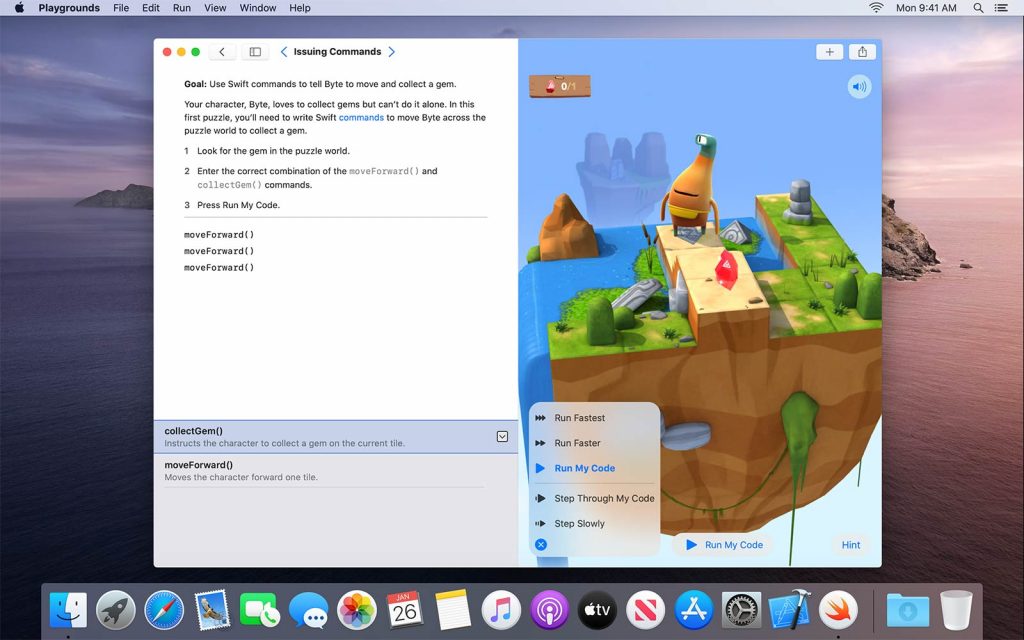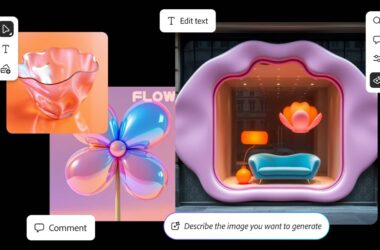There are plenty of resources for kids to learn Swift and other languages, but what if you’re an adult with an idea: how can you learn to code, and fast?
Learning to code at any age is a daunting task, but if you’re trying to get a child started, there are a bunch of resources. Apps and games aplenty, not to mention school holiday programs and even education at school.
When you’re an adult, things are a little bit different. After all, you already have a lot of things to do so making the time for some extra learning isn’t easy. Building up coding skills isn’t easy at the best of times, but like anything you plan to learn legitimately, it means putting aside some time, with an emphasis on “some”.
Fortunately, you can do this type of learning in little bite-sized chunks, taking the “time” out for micro-learning sessions in the odd times you have any time: sitting on a bus or train, waiting for something to cook, the few minutes you have before going to bed.
Much of the learning it takes to get the basics of coding can be done in little sessions, and can give you real world skills, and this journalist is proof.
From September 2022 to January 2023, he spent that four months trying to learn how to program iPhone apps using the Swift language in Apple’s Xcode. I’ve grown up with computers and technology, and so had been exposed to programming before, but Apple’s Swift language for the iPhone, iPad, Mac, Apple Watch, and Apple TV may as well have been starting from scratch.
Part of the reason I decided to learn more coding was simply because I had ideas and couldn’t get them out, and asking AI to code them for you may look like it works, but doesn’t always deliver a full execution.
So instead I spent some money and found some solutions to help me learn the iPhone native programming that is SwiftUI, which in turn helped me build my own app, Simplsaver. These are the recommendations I have if you’re an adult keen to learn to code.
Swift Playgrounds
One of the first places to learn any Swift is a place recommended for kids and adults alike, in an app Apple made called Swift Playgrounds.
Available for iPad and Mac, Playgrounds treats the concepts that help define app development and learning to code like a game, making it an edutainment approach to learning to code.
While mostly built for kids, Swift Playgrounds provides a plain English approach to understanding the concepts that you’ll need, while also offering a coding playground for you to test those things, some of which can be coded into real-life apps specifically on the iPad.
It goes without saying that you’ll need a Mac of some kind if you plan on coding in Swift via Xcode, and the M1 13 inch MacBook Air is one of the least expensive Macs with a screen, while the M2 Mac Mini is probably the least expensive without a screen, so those two serve as great starting points that Swift Playgrounds is compatible with.
However, if all you have is an iPad to start, Swift Playgrounds is a solid way to get a little comfortable with the Swift language.

Udemy
Next up is one of the world’s most obvious places when you go searching for Swift tutorials: Udemy.
The website (and app) is basically a massive educational smorgasbord of sessions and courses run by experts, some of whom are more self-proclaimed, while others seem to genuinely know what they’re on about.
Most things at Udemy cost money, but if you save enough items to a wishlist, you can typically wait until there’s a sale on Udemy to bring down the cost, such as during Black Friday or even waiting until the end of the year when you can expect a New Year’s education kick of sorts.
There are lots of choices at Udemy, but to help you sort through the list, we found Nick Walter’s “Noob to App Store” course a great start, giving you a real-life perspective with some playful conversational approaches that help make sense of the complexities of coding.
Hacking with Swift
I spent a good couple of hundred bucks on courses at Udemy before I found a website that really connected with me, and now it’s an instant recommendation for anyone who wants to learn to build apps in Swift for the iPhone and iPad: Hacking with Swift.
Created by Paul Hudson, Hacking with Swift is free resource with a paid component, but you don’t actually need to spend any money at all. It’s there if you need it and want to go a little deeper (or maybe get the answers for the lessons) with support, too.
One of the best places for any would-be iOS developer to start is Paul’s “100 Days of SwiftUI”, which provides a project-based approach to learning SwiftUI, the current language Apple is using and improving for building apps across its ecosystem.
100 Days of SwiftUI is essentially a video, text, tutorial, and project-oriented approach to learning how to make apps in SwiftUI, and it really, really works.
The virtual rapport you get with Paul is very much a real-life person talking to you and taking you through the concepts, compared to some other educators which can feel very much like they’re talking at you and hardly demonstrating anything. Learning from Paul may see you watching the same video repeatedly and reading the guides, but it gradually gets you in the frame of mind to totally get what’s going on and improve those skills to actual app creation levels.
Medium
With some SwiftUI skills firmly under my belt, one of the places I now love hanging out and paying for is Medium, a bit of an online network of posts and articles from people all across the digital world.
There are a lot of things on Medium, but paying for Medium seems to provide plenty of articles that not only aren’t available for free (some are), but also deliver a lot of genuinely helpful tips, tutorials, and guides for Swift concepts.
Medium is now the go-to place for my brain when I’m lying in bed awake trying to solve a puzzle when it’s clear I should be sleeping. Eventually I fall asleep, often with the answer to a coding problem I’ve been trying to work out firmly entrenched in my head for fixing the next morning.






